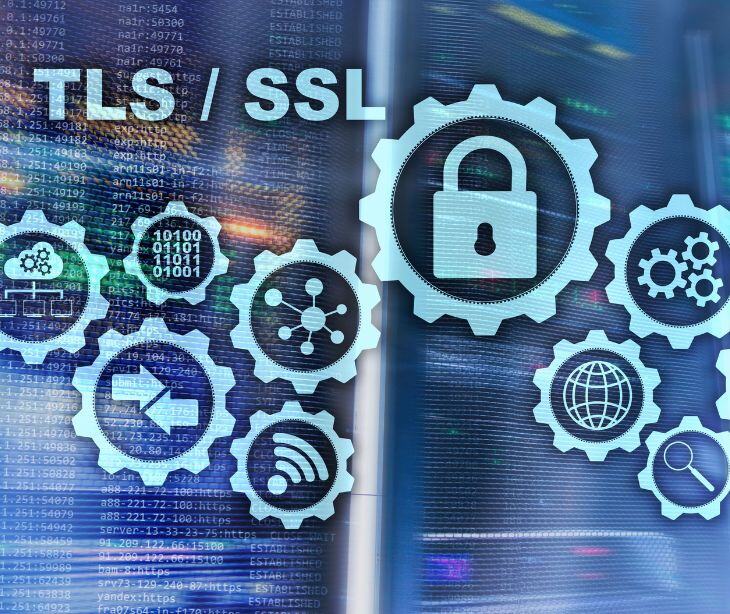
Versions of TLS, such as TLS 1.0, 1.1, 1.2, and the latest TLS 1.3, represent the evolution of the protocol with increasing levels of security and performance. Forms of TLS, like full TLS, Mutual TLS (mTLS), StartTLS, Opportunistic TLS, and Implicit TLS, describe how the protocol is applied in different scenarios to secure communication channels. Implementations refer to the practical application of these forms and versions in real-world settings, such as securing web traffic, email communications, and other online services.
The TLS versions
According to a conference paper discussing the progress leading to TLS 1.3, “The Transport Layer Security (TLS) protocol is the de facto means for securing communications on the World Wide Web. Initially released as Secure Sockets Layer (SSL) by Netscape Communications in 1995, the protocol has been subject to a number of version upgrades over the course of its 20-year lifespan.”
There are different versions of TLS because the protocol has evolved to address new security threats and improve performance over time. Each version, from TLS 1.0 to the latest TLS 1.3, introduces enhancements to encryption algorithms, fixes vulnerabilities, and streamlines the connection process.
The versions include:
- TLS 1.0: This is the first version of TLS, designed as an upgrade to the older SSL 3.0. It offers basic encryption but has several known vulnerabilities.
- TLS 1.1: An improvement over TLS 1.0, addressing some security issues but still considered outdated and less secure by today's standards.
- TLS 1.2: This version introduced security enhancements, including better encryption algorithms and hash functions. It is widely used and considered secure.
- TLS 1.3: The latest version, offering improved performance and security. It simplifies the handshake process, reducing latency, and removing outdated cryptographic algorithms.
What are TLS certificates?
A TLS certificate is a digital certificate that verifies a website's identity and allows for an encrypted connection. It secures the data sent between a user's browser and the web server, keeping sensitive information safe from unauthorized access. TLS certificates are used to secure websites (HTTPS) and email communications.
The forms of TLS certificate include:
- Domain Validated (DV) Certificates
- Organization Validated (OV) Certificates
- Extended Validation (EV) Certificates
- Wildcard Certificates
- Multi-Domain (SAN) Certificates
- Unified Communications Certificates (UCC)
TLS implementations and why they’re important
TLS implementation refers to the way TLS is applied to secure data transmissions over a network. This involves applying the TLS protocol to secure data transmissions over a network. The purpose of implementing TLS is to protect sensitive information by encrypting it.
TLS implementation can take the following forms:
- Full TLS: In this implementation, the entire communication channel between the client and server is encrypted from start to finish. It is widely used for securing HTTPS.
- Mutual TLS (mTLS): Mutual TLS adds an additional layer of security by requiring both the client and the server to authenticate each other using digital certificates. mTLS is commonly used in secure environments where both the client and server need to verify each other's identity, such as in financial services.
- StartTLS: StartTLS is a protocol command used to upgrade an existing insecure connection to a secure one using TLS. It is not a separate protocol but a mechanism to initiate TLS within an already-established connection. StartTLS is often used in email protocols like IMAP (Internet Message Access Protocol), POP3 (Post Office Protocol 3), and SMTP (Simple Mail Transfer Protocol).
- Opportunistic TLS: Opportunistic TLS is a method where the client and server attempt to use TLS if both parties support it, but they fall back to an unencrypted connection if TLS is not available.
- Implicit TLS: Implicit TLS requires the client and server to negotiate the TLS connection before any data is transmitted, effectively using TLS by default. Unlike StartTLS, which upgrades an existing connection, implicit TLS starts with a secure connection from the beginning.
Which form of TLS works best for HIPAA compliant email
TLS 1.2 and TLS 1.3 offer the most advanced security features and improved performance over earlier versions, making them the best for the type of security necessary for HIPAA compliant email. Both forms of TLS simplify the handshake process, reducing latency and making encrypted connections faster.
It eliminates outdated cryptographic algorithms that have known vulnerabilities, ensuring stronger encryption and data integrity. Using the latest encryption techniques, TLS 1.3 provides robust protection for sensitive healthcare information, ensuring it is securely transmitted and safeguarded from unauthorized access.
See also: Top 12 HIPAA compliant email services
FAQs
What is a self-signed TLS certificate?
A self-signed TLS certificate is a certificate that is created and signed by the organization itself rather than by a trusted Certificate Authority (CA). While it can provide encryption, it does not offer the same level of trust as a CA-issued certificate.
Which form of TLS is used by common email services like Gmail and Outlook?
Common email services often use StartTLS to secure email communications.
What is the difference between TLS and SSL?
TLS is the successor to SSL (Secure Sockets Layer). TLS offers improved security and performance compared to SSL. While SSL is now considered outdated and insecure, TLS is the modern standard for secure communications.
Subscribe to Paubox Weekly
Every Friday we'll bring you the most important news from Paubox. Our aim is to make you smarter, faster.




